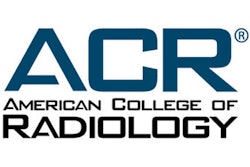
The U.S. Preventive Services Task Force (USPSTF) has published the draft research plan it will use to update its mammography screening guidance. The plan is the first step to issuing new USPSTF breast screening recommendations, which can affect how private insurers reimburse screening.
The USPSTF last issued breast screening recommendations in 2016, which maintained its contentious 2009 recommendation that women in their 50s only receive mammography screening every two years. Many women's health, oncology, and radiology groups advocate for breast screening to take place annually starting at age 40.
When drafting the 2016 recommendations, the USPSTF relied on evidence from randomized controlled trials (RCT) -- a move criticized by mammography proponents at the time. Advocates argued the clinical trials that formed the foundation of the USPSTF's recommendations took place decades prior, as well as that the group ignored more recent research on mammography's benefits.
In its new draft research plan, the USPSTF appears once again poised to rely on RCTs for evaluating the effectiveness of and harms of breast cancer screening strategies on morbidity and mortality. The task force guidance limits evidence to individual participant data meta-analyses, RCTs, and controlled clinical trials.
However, the task force has expanded the type of studies for judging the effectiveness of breast screening on advanced cancer diagnoses. In this case, the task force will also consider cohort studies with contemporaneous controls, population-based nested case-control studies, and cross-section studies from included trials or large population-based studies.
| USPSTF breast screening 2021 draft research plan vs. 2016 final research plan | ||||||
| Types of evidence | Effectiveness -- morbidity and mortality | Effectiveness -- advanced cancer | Harms | |||
| 2016 | 2021 | 2016 | 2021 | 2016 | 2021 | |
| RCT | ✓ | ✓ | ✓ | ✓ | ✓ | ✓ |
| Meta-analyses | ✓ | ✓ | ✓ | ✓ | ✓ | ✓ |
| Cohort studies | ✓ | ✓ | ✓ | ✓ | ||
| Controlled clinical trials | ✓ | ✓ | ✓ | |||
| Case-control studies | ✓ | ✓ | ||||
| Cross-sectional studies | ✓ | ✓ | ||||
| Systematic reviews | ✓ | |||||
| Modeling studies | ✓ | |||||
The draft research plan also includes a new focus on evaluating racial disparities in breast cancer screening and outcomes. The USPSTF's three key questions all include a subprompt to compare how effectiveness and harms differ by population, including by age and race/ethnicity.
The USPSTF also proposed a contextual question that explicitly asks, "How do structural racism, social inequalities, unequal access to high-quality healthcare, and other factors contribute to disparities in breast cancer screening, diagnosis, treatment, and health outcomes? In particular, what may account for higher breast cancer mortality among Black women in the United States?"
The remaining contextual questions will evaluate the following:
- Risk assessment tools for average-risk screening populations
- Personal screening preferences of women by age
- Accuracy and reproducibility of BI-RADS breast density assessments
- The influence of mammography effectiveness trials on conclusions about the harms and benefits of screening
Dr. Dana Smetherman, chair of the Breast Imaging Commission at the American College of Radiology (ACR), applauded the USPSTF’s inclusion of diverse populations in the draft research plan, pointing to evidence that Black women are at a higher risk of developing breast cancer under the age of 50. She also called on the task force to consider adding more robust data, including observational studies, when drafting the new recommendations.
“We would recommend that the USPSTF use more recent and broader research and data,” Smetherman told AuntMinnie.com.The USPSTF plan is open to public comments through February 17. Once the research plan is finalized, researchers will conduct a systematic review of the evidence to answer the questions outlined in the final research plan. The USPSTF will then release new draft recommendations and evidence review, followed by a public comment period and the final recommendations and evidence summary.
The new recommendations will be the first update to USPSTF's screening guidance since 2016, and they could have an effect on the reimbursement for screening mammograms. The Patient Protection and Affordable Care Act (ACA) allows private payors to not reimburse beneficiaries for services that have not received at least a grade B recommendation from USPSTF.
While recent legislation has temporarily delayed the implementation of the USPSTF screening guidelines, advocacy groups have expressed concern that similar recommendations to the ones finalized in 2016 could result in women paying more for starting mammography at age 40 or having an annual mammogram.
“That's why these guidelines have such a big impact for all of us as a society,” Smetherman said. “Because these are the tests that will be paid by insurers without cost-sharing by patients.”



















